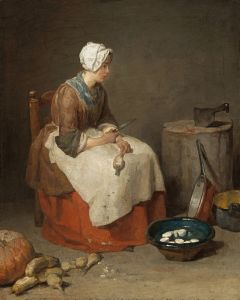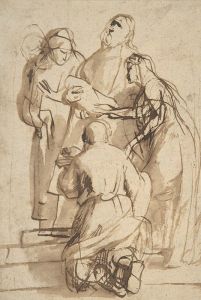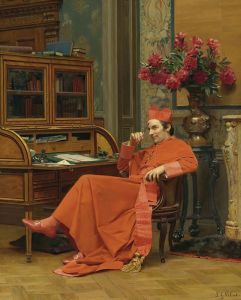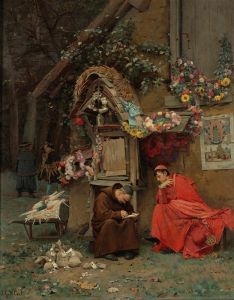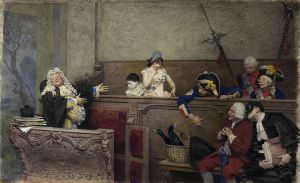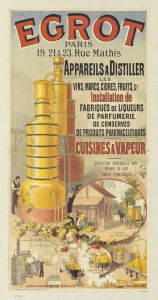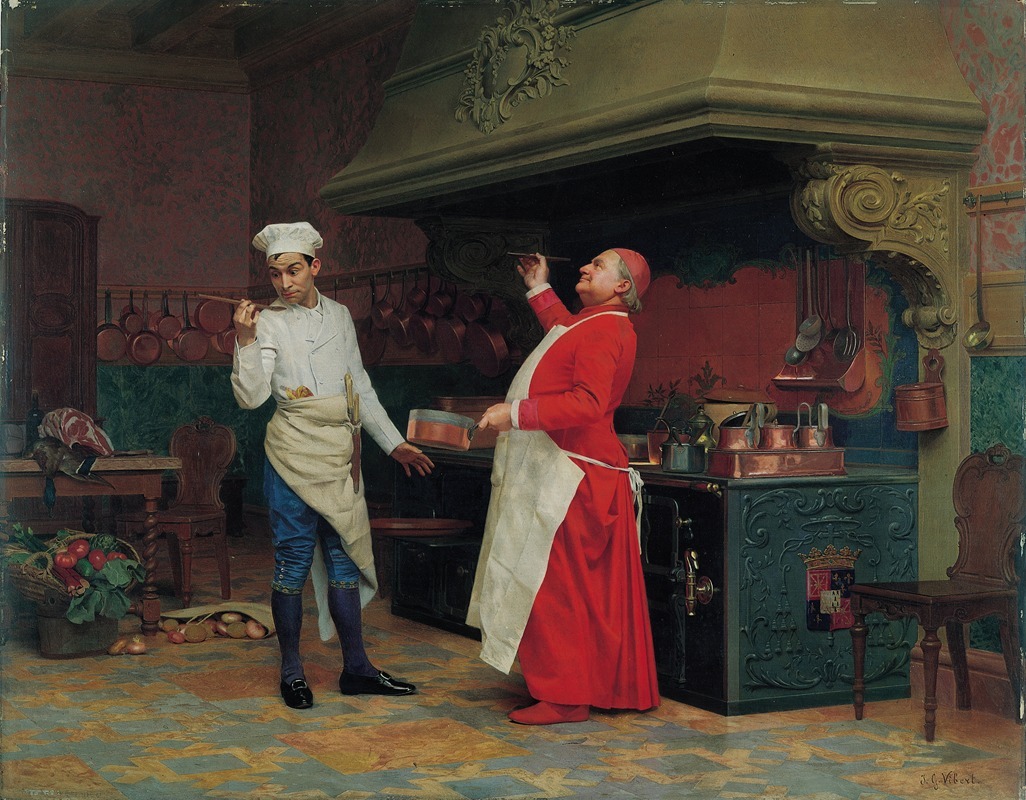
The Marvelous Sauce
A hand-painted replica of Jehan Georges Vibert’s masterpiece The Marvelous Sauce, meticulously crafted by professional artists to capture the true essence of the original. Each piece is created with museum-quality canvas and rare mineral pigments, carefully painted by experienced artists with delicate brushstrokes and rich, layered colors to perfectly recreate the texture of the original artwork. Unlike machine-printed reproductions, this hand-painted version brings the painting to life, infused with the artist’s emotions and skill in every stroke. Whether for personal collection or home decoration, it instantly elevates the artistic atmosphere of any space.
Jehan Georges Vibert was a French academic painter known for his detailed and often satirical works, particularly those depicting clergy and scenes from the Catholic Church. One of his notable paintings is "The Marvelous Sauce," which exemplifies his skill in capturing intricate details and his penchant for humor.
"The Marvelous Sauce" is an oil painting created in the late 19th century, a period when Vibert was at the height of his artistic career. The painting is a fine example of Vibert's ability to blend realism with a touch of whimsy, a characteristic that made his works popular among art collectors of his time.
In "The Marvelous Sauce," Vibert portrays a scene set in a well-appointed kitchen, where a group of clergy members, including a cardinal, are gathered around a pot. The cardinal, dressed in his resplendent red robes, is the central figure, and he appears to be tasting or supervising the preparation of a sauce. The expressions and postures of the figures suggest a moment of culinary delight and anticipation, capturing a sense of camaraderie and shared enjoyment. The painting is rich in detail, from the textures of the fabrics to the gleam of the kitchen utensils, showcasing Vibert's meticulous attention to detail.
Vibert's work often included elements of satire, and "The Marvelous Sauce" is no exception. By placing high-ranking church officials in a domestic and somewhat mundane setting, Vibert gently pokes fun at the clergy, highlighting their human side and suggesting that they, too, partake in the simple pleasures of life. This approach was typical of Vibert, who frequently used humor to comment on the social and religious structures of his time.
The painting reflects the broader context of 19th-century France, a time when the role of the Catholic Church was both influential and subject to scrutiny. Artists like Vibert used their work to explore and sometimes critique the intersection of religion, power, and everyday life. "The Marvelous Sauce" can be seen as a lighthearted yet insightful commentary on these themes.
Today, "The Marvelous Sauce" is appreciated not only for its artistic merit but also for its historical significance. It offers a glimpse into the cultural and social dynamics of the period, as well as Vibert's unique perspective as an artist. The painting is part of various collections and continues to be studied and admired for its craftsmanship and the subtle humor that Vibert so skillfully employed.
Jehan Georges Vibert's legacy as a painter is marked by his ability to capture the nuances of human behavior and societal norms, and "The Marvelous Sauce" remains a testament to his talent and wit.





